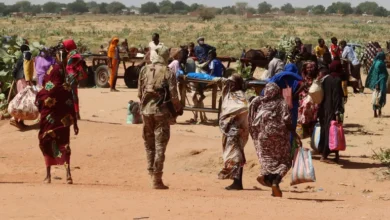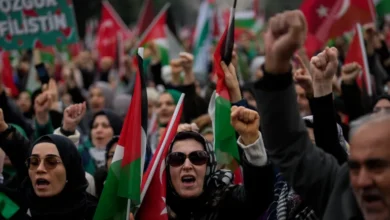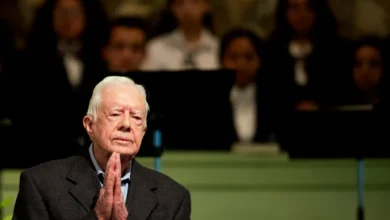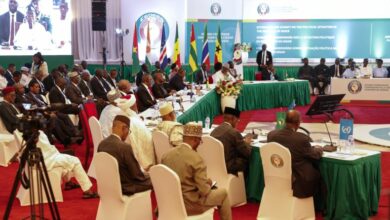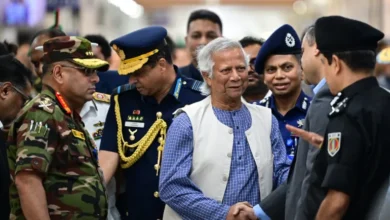It is time to use Russia’s frozen assets to help Ukraine
Maximilian Hess
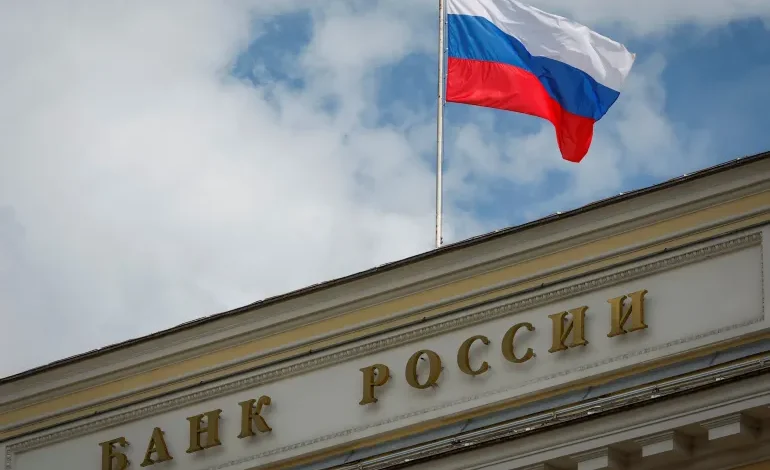
Maximilian Hess
An estimated $350bn in Russian government assets have been frozen in Western accounts since Russian President Vladimir Putin ordered a full-scale invasion of Ukraine on February 24, 2022. These are not idle funds. In 2023, Belgium-based financial services company Euroclear, whose settling and clearance role mean that it holds 197 billion euros ($214bn) in such assets, reported that they produced at least 3 billion euros ($3.26bn) from interest.
Given that the sanctions on the Kremlin remain firmly in place and Putin has shown no willingness to negotiate on his demand to annex one-quarter of Ukraine’s territory or to cease his attacks, how these assets can be harnessed to push for an end to the war or help Ukraine resist has become a key question for Kyiv’s Western allies.
British Foreign Secretary David Cameron publicly opened the doors to the idea last December by stating: “Instead of just freezing that money, let’s take that money, [and] spend it on rebuilding Ukraine.” Meanwhile, Washington has privately circulated a plan to seize at least some of the assets although the administration of US President Joe Biden dithered on previous European proposals for such measures in 2022.
But action speaks louder than words. The only material step taken thus far is one by Belgium, which is setting aside tax earnings thrown off by the frozen funds to aid Kyiv. Yet dangerous and deadly delays resulting from Hungarian Prime Minister Viktor Orban and Republican hardliners in the US Congress blocking direct financial and material aid have made the question all the more urgent.
Washington and Brussels are ultimately likely to find additional funds for Kyiv, but both have already hinted that aid will be diminished compared to what Kyiv received in the past, even as Russia’s military spending grows by leaps and bounds. It is estimated that the Kremlin has budgeted some $140bn – or seven percent of Russia’s gross domestic product – for its military in 2024.
And as Europe and the United States both face crucial elections in 2024 that are likely to see calls to further diminish the cost to taxpayers for aiding Ukraine, harnessing Russia’s frozen funds appears not only an increasingly attractive solution but a necessary one if Western support for Kyiv is to be ensured in the years to come.
But the process of actually doing so has raised considerable debate among policymakers, historians, diplomats, academics, and international lawyers.
As with the West’s initial sanctions response to Russia’s full-scale invasion, the term “unprecedented” has been thrown out quite a lot.
Many opponents of seizing Russia’s frozen funds warn that the backlash for the West could be severe because it would establish a precedent for states to openly seize assets of other countries in response to their foreign policy decision-making. Ultimately they fear that this will cause third countries to potentially threaten the same against the West and that doing so will undermine the so-called “global rules-based order”.
Others caution that it will accelerate the shift of countries away from the US dollar, which is what grants the US sanctions their extraterritorial reach by threatening access to the core trading instrument of global finance and trade, a cost far greater than aiding Russia, even for its allies and partners except those under sanctions themselves. This is why powers such as China and India are hesitant to openly aid Moscow, and only its fellow sanctions-stricken sovereigns like North Korea, Iran, and Syria do so openly.
Those calling for hesitancy point to the expansion of the so-called BRICS alliance – which Putin has openly said should lead the way on finding an alternative to the dollar. But although Egypt, Ethiopia, Iran, Saudi Arabia and the United Arab Emirates are now nominal members of the bloc, affiliated BRICS institutions remain largely toothless.
Even the New Development Bank that is the most solid institutional creation of the founding BRICS members – Brazil, Russia, India, China, and South Africa – remains relatively small. It had just $26bn in assets at the end of 2022, and has suspended giving out new loans to Russia.
BRICS members were not only too divided to take up the Russian suggestion of discussing a new currency at their South African summit last year, their fear of losing access to US dollars was so great they agreed Putin was to refrain from attending the meeting.
The argument that seizing Russia’s assets risks accelerating de-dollarisation is sophomoric. It fails to consider the fundamental flaw at the heart of a structure like BRICS, or any other hypothetical political-economic tie-up of non-Western countries.
For the major BRICS members not only have disparate and often competing geopolitical interests – which they may occasionally leave aside to ally around pushing back on US hegemony – but they also run substantial trade surpluses, i.e. they export more than they import.
Thus, their borrowing needs are secondary to their need to find a safe haven for the earnings they gain from selling goods to the rest of the world, whether it be manufactured goods in India or China’s case or commodities in Russia and Brazil’s. It is not that the US dollar and all of Washington’s laws and regulations that come along with holding it is their ideal instrument for banking these earnings.
But they need deficit markets like the US’s that import such capital to put their earnings to use. And unlike their own currencies, they want currencies that lack capital controls to ensure these funds can be moved abroad. The only real alternative to the US dollar – because it also lacks capital controls and is the currency of another large deficit market – is the euro.
If the US and Europe do proceed as they should and seize Russia’s funds, it may increase some other countries’ desire to move away from the dollar, but it will not erase the structural challenges to doing so.
The second reason for Western skittishness comes from the fact that they prefer to talk about operating in a “rules-based system” and to paint Putin and his ilk as the greatest threat to that system. Arguments that seizing Russia’s assets violates a principle of sovereign immunity or does not comport with principles or international law are baseless. The move is after all a response to Russia’s own violation of these principles and is only being held to account for its action.
The idea that the international order is based on a series of rules or laws is fallacious. After all, even if there was the will, no other country had the ability to hold Washington to account for its 2003 invasion of Iraq and the devastating aftermath thereof. A precedent that would have raised the cost of doing so would be no bad thing.
Solidifying the principle that unilateral aggression or annexation of territory should cause a sovereign’s position under international law to be weakened is precisely the kind of thing that a just rules-based order should seek to implement. If the West’s use of its financial might must make it right, so be it.
Time is of the essence as Russia has substantially increased its missile and drone attacks against Ukraine in recent weeks and Putin seeks to further deter Western support for Kyiv. Seizing Russia’s frozen assets is not just the most effective way to ensure that Ukraine can continue to resist Putin’s onslaught, but it can also dissuade future such aggression by any power.
